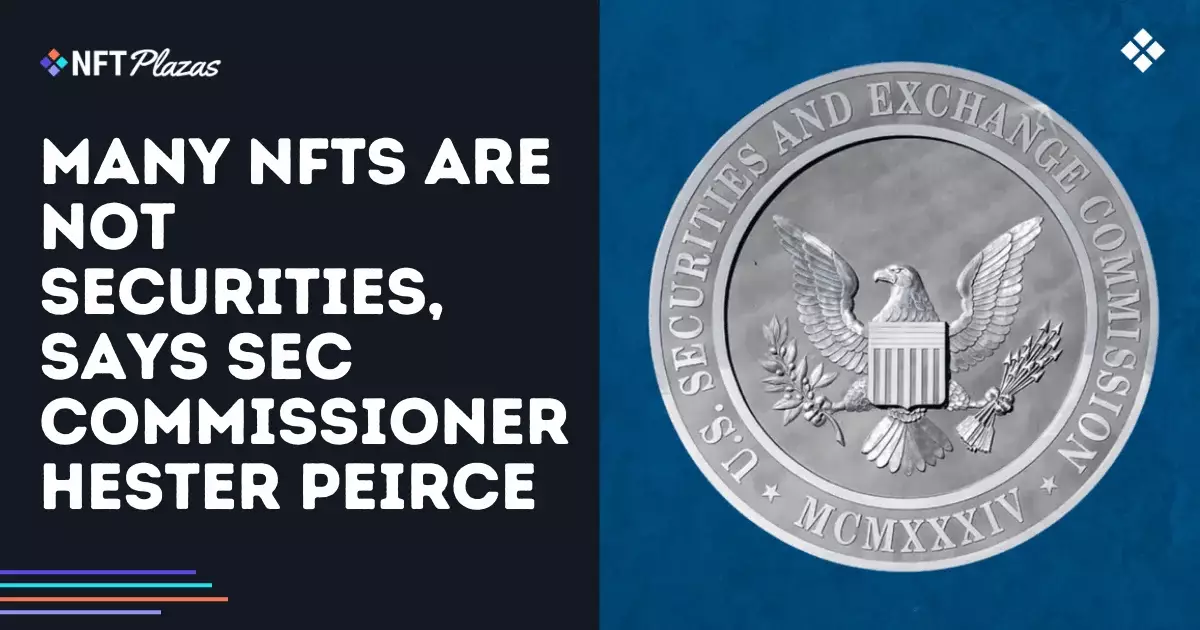In a pivotal moment at the SEC Speaks 2025 event, Commissioner Hester Peirce boldly asserted that a significant number of non-fungible tokens (NFTs) do not meet the current legal definition of securities under U.S. law. This assertion is not just a mere legal interpretation; it showcases a startling disconnect between innovation and regulation. As the NFT industry burgeons, the necessity for clarity around regulatory frameworks has never been more urgent. The SEC’s approach seems more reactive rather than proactive, leaving creators and investors straddling the precarious line between legality and chaos.
The Dichotomy of Market Integrity and Investor Protection
Peirce highlighted a vital truth: while artistry and ownership define NFTs, the conditions under which they are marketed can pivotally affect their classification as securities. The crux of the concern lies in scenarios where NFTs are marketed with the promise of profit derived from a centralized entity’s actions. This not only muddles the waters of creative expression but raises critical questions about market integrity. Regulatory bodies must strike a balance between protecting investors and fostering the innovation that digital assets represent.
Moreover, the SEC’s enforcement-heavy approach has become a double-edged sword. By focusing predominantly on punitive measures, regulators risk stifling creativity within the NFT space, thereby potentially sidelining a whole ecosystem of artists and creators who wish to utilize this technology for legitimate purposes. A more visionary approach could encourage the development of a vibrant and regulated marketplace, bringing in far more revenue and innovation than the current model allows.
The Urgent Call for Safe Harbor Legislation
Peirce’s call for a Safe Harbor framework encapsulates an unprecedented opportunity for the regulatory landscape of digital assets. This proposed legislation would grant crypto projects a crucial three years of breathing room to innovate and develop their offerings before falling under stringent securities regulations. This is not just a nicety; it is a necessity in a rapidly evolving sector, providing the necessary breathing space that allows projects to evolve into decentralized entities. It also walks a fine line of investor protection without stifling innovation.
However, without formal adoption of this framework, the SEC risks missing the mark entirely. The inherent potential for NFTs to revolutionize various industries, from art to gaming, is tremendous, yet an ambiguous legal landscape threatens to keep these innovations from reaching their full potential.
Future Legislative Actions Required
Peirce’s insights unveil a significant gap in the current legal framework and the emergent digital asset landscape. It is quite shocking that after years of innovation in technology, regulatory bodies still cling to outdated definitions that do not capture the essence of NFTs and similar assets. The urgent need for clarity in regulations is apparent—where’s the comprehensive guide that delineates the boundary between creativity and securities law?
Listening to industry feedback through the newly created Crypto Task Force is a step in the right direction, but it raises another question: will the SEC act swiftly enough to enact meaningful changes? In a landscape characterized by speed and technological advancement, inaction is tantamount to regression. The proposed updates hold significant promise for a more equitable and thriving NFT market. But until the wheels of the regulatory machine turn with purpose, creators and investors navigate a treacherous and uncertain terrain.















